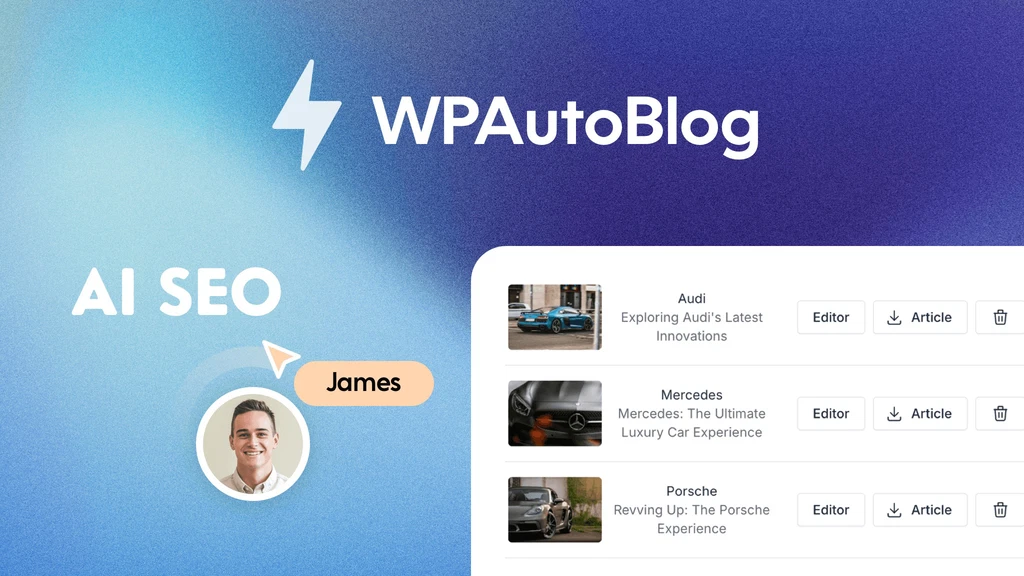

Managing a successful WordPress blog demands consistent content delivery. Auto-scheduling is a powerful tool. It enables bloggers to maintain a steady stream of engaging posts. This guide explores auto-scheduling. It covers both native WordPress features and the WPAutoBlog plugin. It offers strategies for optimizing your content calendar.
WordPress, the Best Blogging Platform, offers built-in scheduling. This core functionality is crucial for content planning. It allows you to prepare posts in advance. Then, schedule them for optimal release times. Mastering this feature is the first step. It builds a solid foundation for more advanced automation.
Step-by-Step Guide to WordPress Scheduling:
Craft Your Content: Create your blog post as usual. Use the Gutenberg editor or the Classic Editor.
Access the “Publish” Panel: This panel sits on the right side of your editing screen.
Locate the “Publish immediately” Link: It’s near the “Publish” button. Clicking opens scheduling options.
Choose Date and Time: Pick the specific date and time you want your post live.
Finalize with “Schedule”: The “Publish” button transforms. Click “Schedule” to confirm.
Consistent Delivery: Regular content keeps your audience engaged. Even when you’re occupied, your blog stays active.
Strategic Timing: Analyze your audience data. Schedule posts when they’re most active. Boost visibility and engagement.
Efficient Workflow: Dedicate time to writing batches of content. Then, schedule for later. This creates focused writing sessions.
Global Reach: Target different time zones. Deliver content to readers worldwide.
Missed Schedule: Occasional errors can happen. Double-check your scheduled posts regularly. Address any Missed schedule promptly.
Content Relevance: Ensure scheduled content remains timely. Adjust if events change, altering context.
Maintenance: Regularly review your content calendar. Ensure future posts align with your overall strategy.
Table 1: WordPress Native Scheduling Features
| Feature | Description | Benefits |
| Post Scheduling | Set specific date and time for publishing | Consistent content delivery, strategic timing |
| Draft Saving | Save incomplete posts as drafts | Allows ongoing editing and refinement before scheduling |
| Revision History | Track changes made to posts over time | Easily revert to earlier versions if needed |
| Private Post Option | Preview posts before publishing without making them public | Ensures quality control and accuracy before going live |
WPAutoBlog extends WordPress’s capabilities. It often comes as a WordPress plugin. It provides advanced features for content creation and scheduling. These tools aim to streamline your workflow. They help you manage content more efficiently.
Core Features of WPAutoBlog (Potential):
Automated Content Curation: WPAutoBlog might automatically collect articles from RSS feeds. Tailor content selection with keywords and categories. Always verify content rights and provide attribution.
AI-Powered Content Generation: Generate content using AI. It might rewrite articles for uniqueness. Be cautious about content quality. Always aim for accuracy.
Advanced Scheduling Options: This goes beyond standard scheduling. Features often include content queuing and category-based publishing.
Social Media Promotion: Connect to social networks. Share new posts automatically. Increase your reach and engagement.
Enhanced SEO: Use integrated Keyword research tools. Optimize content for better search engine performance.
Transparency: Be open about using automated tools. Build trust with your audience.
Verification: Never publish unverified information. Ensure accuracy to maintain credibility.
Fair Use: Adhere to copyright regulations. Provide clear attribution to original sources.
Learn the best techniques to auto-schedule your WordPress blog posts with WPAutoBlog. Optimize your workflow and ensure consistent content delivery effortlessly

Maximize the benefits of WPAutoBlog with strategic scheduling. Implement these methods for greater efficiency:
Content Queuing: Build a queue of prepared posts. WPAutoBlog publishes them in a set order.
Category-Based Scheduling: Assign specific days or times to categories. Maintain topic diversity and interest.
Interval Posting: Set regular intervals for publishing. For example, every Monday, Wednesday, and Friday.
Bulk Schedule: Streamline your workflow by using Bulk schedule features, scheduling lots of posts at once.
Analyze Engagement: Track which times yield the highest engagement. Adjust schedules to capitalize on peak periods.
Monitor Performance: Evaluate post performance based on schedule times. Refine your strategy continuously.
Adapt to Trends: Adjust your schedule for emerging topics. Stay relevant and timely.
Implement Notifications: Set up alerts for failed posts.
Create a Contingency Plan: Have backup content ready to publish.
Investigate Root Causes: Find out why posts failed. Fix technical issues or workflow problems.
Table 2: Potential Scheduling Conflicts & Solutions
| Issue | Potential Cause | Solution |
| Post Fails to Publish | Plugin Conflict, Server Error | Deactivate Plugins, Contact Hosting Support |
| Incorrect Time Zone | Incorrect WordPress Settings | Verify Time Zone Configuration under WordPress Settings |
| Content Not Relevant | Lack of Review After Scheduling | Review and Modify Content to Ensure Timeliness Before Scheduled Date |
Effective auto-scheduling goes beyond just setting dates. It requires a strategic approach. It considers content variety, SEO, and audience engagement.
Building a Content Calendar:
Define Goals: What do you want to achieve? (Traffic, leads, sales).
Identify Target Audience: Know your audience’s interests. What problems do they have?
Brainstorm Content: Generate a range of topics and formats.
Map to Calendar: Assign topics and dates based on goals and audience.
Review and Adjust: Adapt the calendar as needed.
Free Keyword Generator: Use free tools like Free Keyword Generator to find trending topics.
Keyword Density: Integrate keywords naturally. Aim for optimal keyword density.
Readability: Write clearly and concisely. Improve readability for broad appeal.
Meta Descriptions: Craft compelling descriptions for search engines.
Diverse Content: Mix blog posts, videos, infographics, and more.
Interactive Elements: Include polls, quizzes, and Q&A sessions.
Community Building: Encourage comments and discussions.
Plugin Source: Download plugins from the official WordPress repository.
Regular Updates: Keep all plugins and WordPress up to date. Address potential security vulnerabilities promptly.
Backup Strategy: Back up your website regularly. Prevent data loss.
Transform Blog Posts: Convert articles into videos or infographics.
Combine Content: Merge related posts into an eBook or guide.
Update Old Content: Refresh outdated articles. Improve SEO and engagement.
Automatic Sharing: Use WPAutoBlog to automatically share content.
Custom Messages: Tailor social media posts for each platform.
Engagement Monitoring: Track social media performance. Adjust your strategy.
By combining powerful scheduling tools, a well-crafted content calendar, and a focus on audience engagement, you can maximize the impact of your WordPress blog.
Yes, WordPress has a built-in scheduling feature in the post editor.
Use plugins like WPAutoBlog to automate post publishing.
Dynamic posts use custom code or plugins to update content automatically.
WPAutoBlog, Blog2Social, and similar options are popular. Choose the plugin meeting your needs.
Yes, WordPress has a built-in scheduling tool for posts.
Select the desired date and time in the “Publish” panel of the post editor.
Discover thesaasifyhub.com, where we specialize in reviewing essential SaaS products like GetResponse and FreshBooks. Our mission is to assist you in finding the best digital tools to streamline your operations and drive growth. Let’s explore together!
Welcome to thesaasifyhub.com – where SaaS meets simplicity. Our journey began with a simple mission: to make the world of SaaS accessible, understandable, and beneficial to everyone. We dive into products like GetResponse, QuickBooks, FreshBooks, CuraDebt, and AppSumo, cutting through the noise to deliver honest, insightful reviews.
© 2024 TheSaasifyhub, All right reserved.